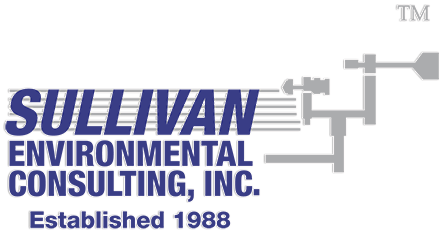- info@sullivan-environmental.com
- 1900 Elkin Street, Suite 200, Alexandria VA 22308
- (703) 780-4580
- Home
- /
- Atmospheric Dispersion Modeling
Atmospheric Dispersion Modeling Consulting Services
At Sullivan Environmental, we perform air dispersion modeling using modeling platforms including AERMOD, CALPUFF, ISCST3, CAL3QHC, TOXST, SLAB, and SCREEN3. Our senior Atmospheric Dispersion Modeling experts utilize several different pre and post-processing meteorological and source processing programs including PCRAMMET, BPIP, CALMET, CALPOST, AERMET, and others to support the modeling depending on the types of sources, meteorological data sets, and the specific project application(s).
Sullivan Environmental has also developed various dispersion modeling programs such as TOXST, the Fumigant Emissions Modeling System (FEMS), and the modeling platform RISKMANpro ™. The RISKMANpro ™ model was designed to assess emissions from dense gas accidental release scenarios. This model can be used to refine hazard zones for risk management programs (RMP) and other applications.
Sullivan Environmental performs modeling for a variety of sources for toxic chemical endpoints or EPA priority pollutant endpoints, including power plants; municipal incinerators; industrial plant sources; agricultural pesticide emissions sources; mining waste emissions; traffic and parking garage sources; quarries; gasoline transfer stations; bus depots; and truck loading docks.
Examples of Dispersion Modeling Projects include:
Accident analysis example: A barge carrying volatile organic chemicals struck a bridge in a major metropolitan area causing the airborne emissions of volatile organic chemicals. The emissions were evaluated as part of this analysis and normalized isopleth analyses were produced as a function of time to evaluate relative exposures.
Accident analysis design example: Sullivan Environmental was awarded a Small Business Innovative Research (SBIR) contract to design an air quality modeling system to support the United States Air Force handling of toxic materials including rocket fuel. A modeling system was developed based on the SLAB accident analysis dispersion modeling. The design was developed to provide isopleth analysis of the outdoor environment as a function of time, as well as to identify concentrations in the indoor environments.
Gas station impact analysis example: In addition to volatile organic compounds generated from a gas pumping operation and from idling traffic, other criteria pollutants were modeled to evaluate air quality impacts to the surrounding area. Limited confirmatory air quality monitoring was performed for selected pollutants, noise, and odor analysis.


Advantages
- Our senior Atmospheric Dispersion Modeling experts each have over 40 years of professional experience.
- Our senior modelers are highly respected within the scientific community.
- The firm has completed complex modeling assignments for the government and industrial clients and can meet your modeling needs.

Benefits
- Our senior Atmospheric Dispersion Modeling experts are experienced using several different pre and post-processing meteorological and source processing programs.
- We are experts in air quality and have managed complex modeling projects and legal cases involving air quality and meteorological expert analysis.
- Sullivan Environmental has developed various dispersion modeling programs such as TOXST, the Fumigant Emissions Modeling System (FEMS), and the modeling platform RISKMANpro ™.
